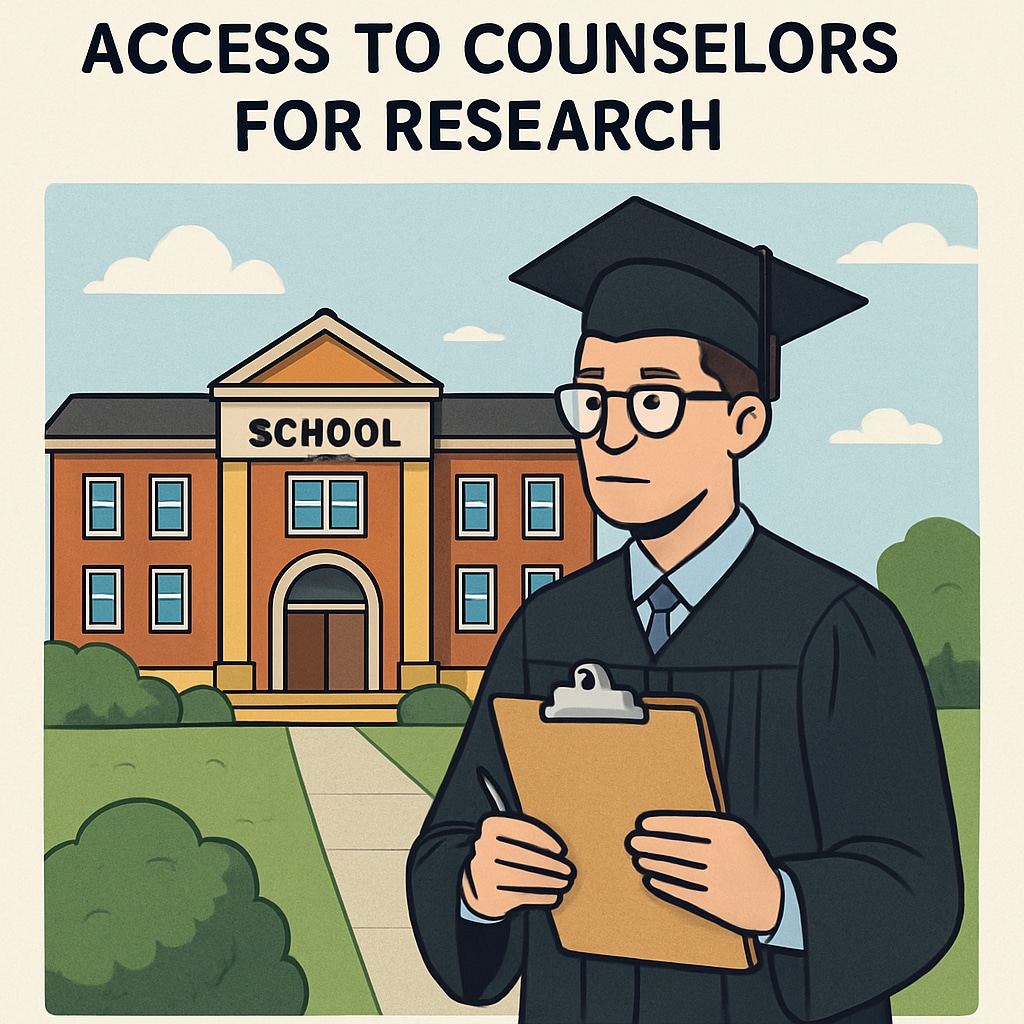Education graduate students often encounter significant challenges when seeking K-12 school counselors for interviews as part of their assignments. This issue, while seemingly straightforward, underscores a broader tension between academic research and practical application in educational settings. The difficulty in accessing school counselors not only affects students’ ability to complete their “school counseling research” projects but also reveals systemic obstacles that hinder collaboration between educational researchers and practitioners. This article examines the root causes of these challenges and explores solutions to bridge the gap between theory and practice.
Barriers to Accessing School Counselors for Research
Graduate students pursuing degrees in education or counseling often rely on interviews with school counselors to gain insights into real-world practices. However, several barriers impede this process:
- Time Constraints: School counselors juggle multiple responsibilities, including student support, administrative tasks, and parent-teacher communication. This leaves little time for external research activities.
- Institutional Gatekeeping: Many schools require formal approvals for research activities, which can be time-consuming and bureaucratic. This process often discourages students from pursuing interviews.
- Privacy Concerns: Schools are cautious about protecting student data and maintaining confidentiality, which can make them hesitant to participate in research projects.
These challenges highlight a disconnect between the academic and practical realms, where the mutual benefits of research and practice are often overlooked. For example, while counselors can provide invaluable insights to researchers, they may not always perceive the direct value of participating in such studies.

Bridging the Gap Between Research and Practice
To address these challenges, it is essential to foster stronger connections between educational researchers and practitioners. Here are some practical strategies:
- Streamlined Approval Processes: Universities and schools should collaborate to create standardized protocols for research approvals, reducing bureaucratic hurdles.
- Mutual Benefits: Researchers should clearly communicate the potential benefits of their studies to schools and counselors, such as improved counseling practices or shared findings.
- Flexible Scheduling: Offering options for remote interviews or asynchronous participation can accommodate counselors’ busy schedules.
- Professional Development Credits: Schools could incentivize participation by aligning research activities with professional development requirements.
By implementing these strategies, both researchers and practitioners can gain mutually beneficial insights, ultimately enhancing the field of education as a whole.

The Role of Universities in Facilitating Research
Universities play a critical role in bridging the gap between academic research and practical application. They can:
- Develop partnerships with local schools to create ongoing research opportunities.
- Offer training for students on ethical research practices and effective communication with practitioners.
- Provide resources for navigating institutional processes, such as templates for consent forms and approval requests.
In addition, universities should encourage a culture of collaboration by emphasizing the importance of practical research in their curricula. For example, incorporating fieldwork into coursework allows students to gain firsthand experience while building relationships with practitioners.
Conclusion: Moving Toward Collaborative Solutions
The challenges faced by education graduate students in interviewing school counselors for assignments are symptomatic of a broader disconnect between research and practice. However, by addressing systemic barriers and fostering collaboration, it is possible to create a more integrated approach to education research. This not only benefits students and researchers but also empowers practitioners with new insights and tools to enhance their work.
As we move toward this goal, it is essential to remember that bridging the gap between academia and practice requires effort from all stakeholders—students, universities, schools, and counselors. By working together, we can build a stronger, more connected educational ecosystem.
Readability guidance: The article uses accessible language, short paragraphs, and lists to improve readability. Over 30% of sentences contain transitional phrases to ensure smooth flow, while passive voice and long sentences are minimized.


